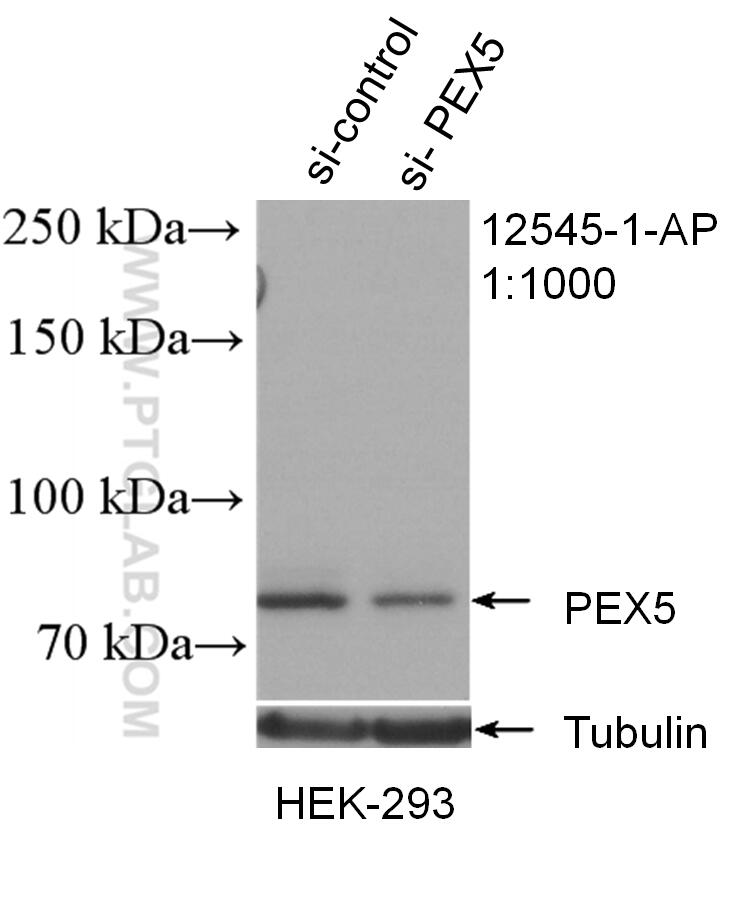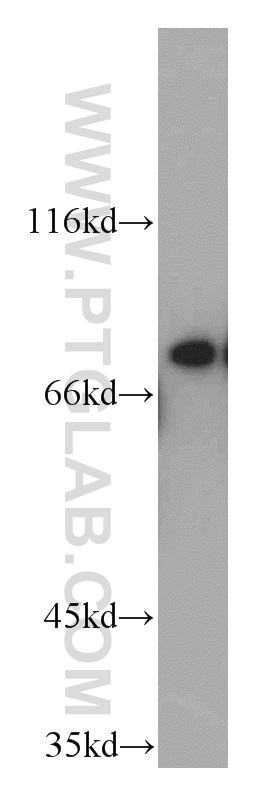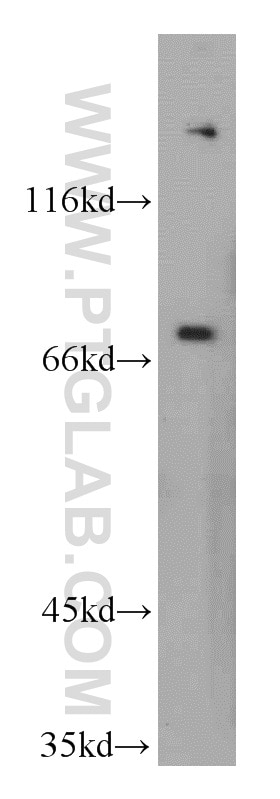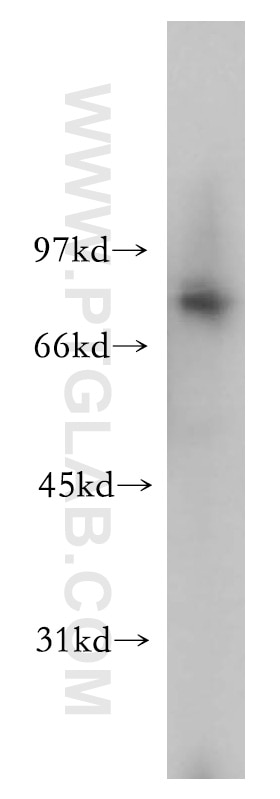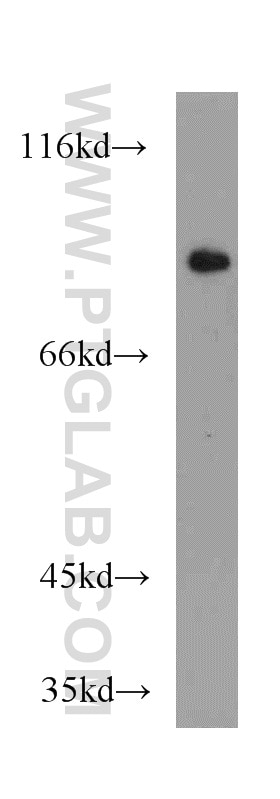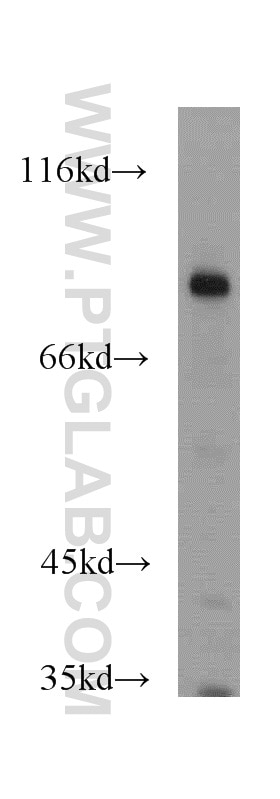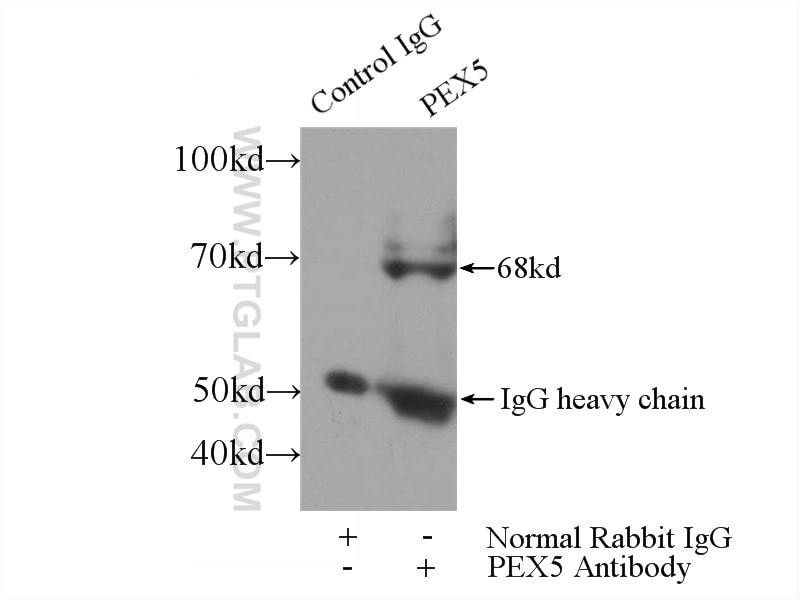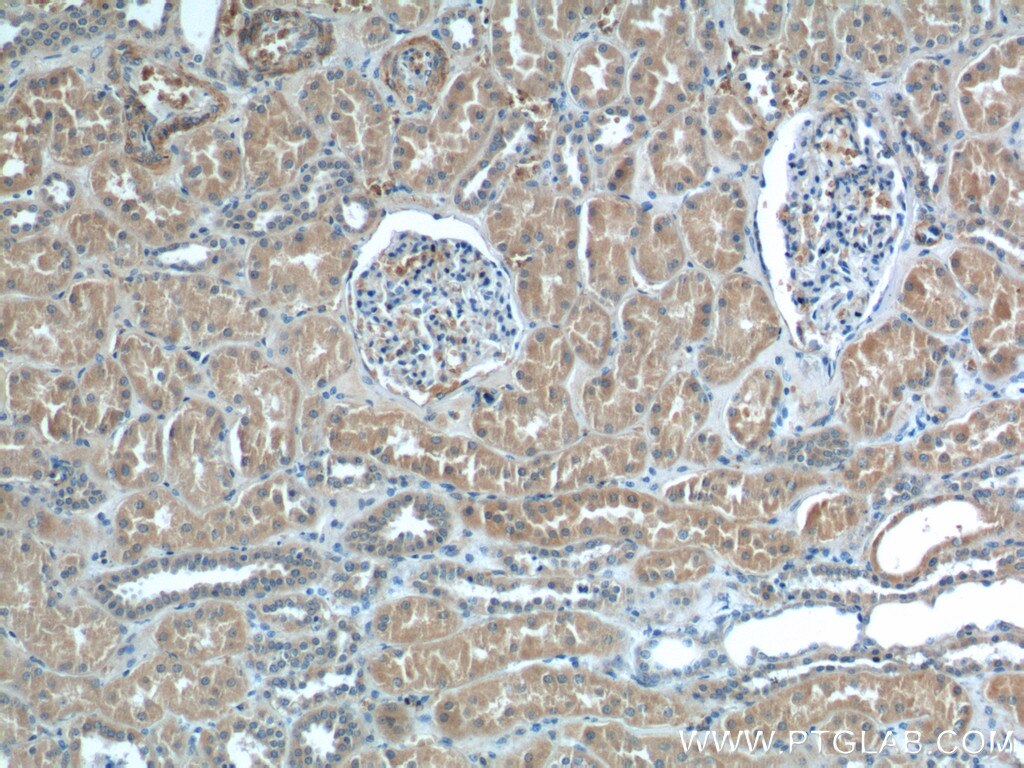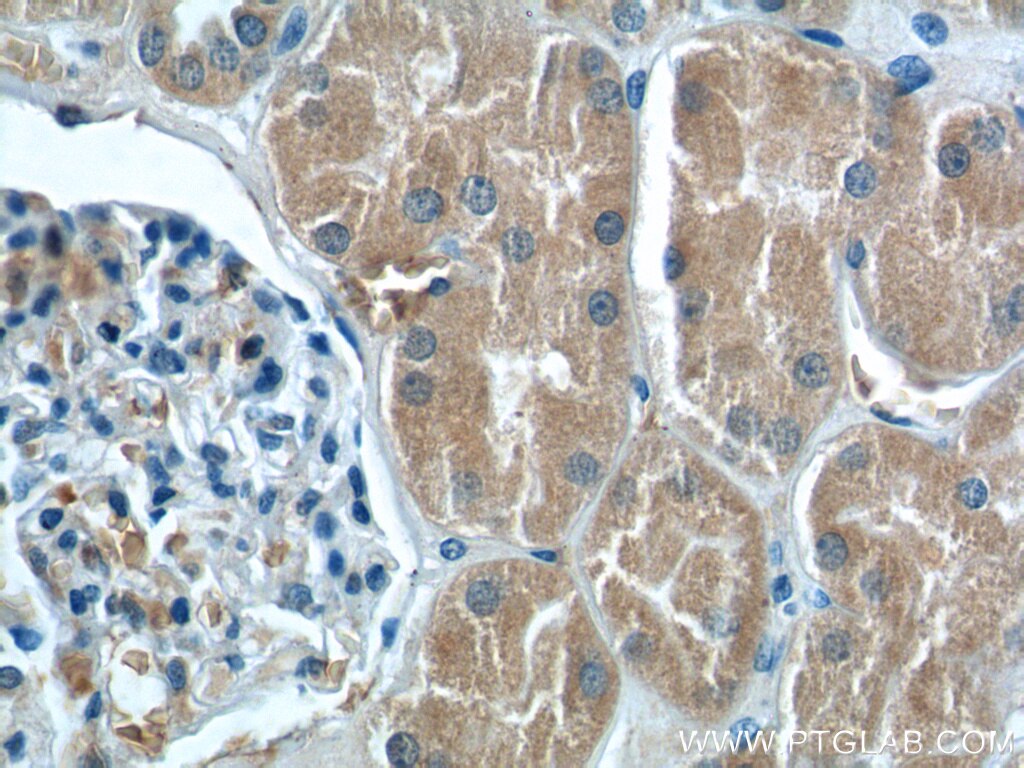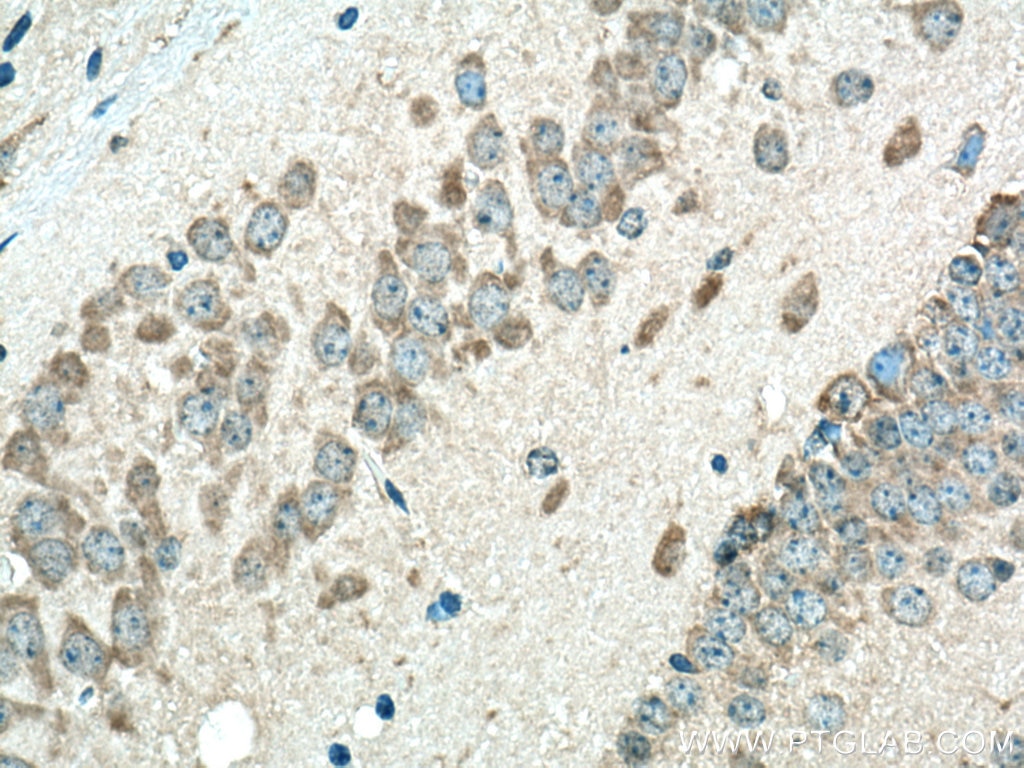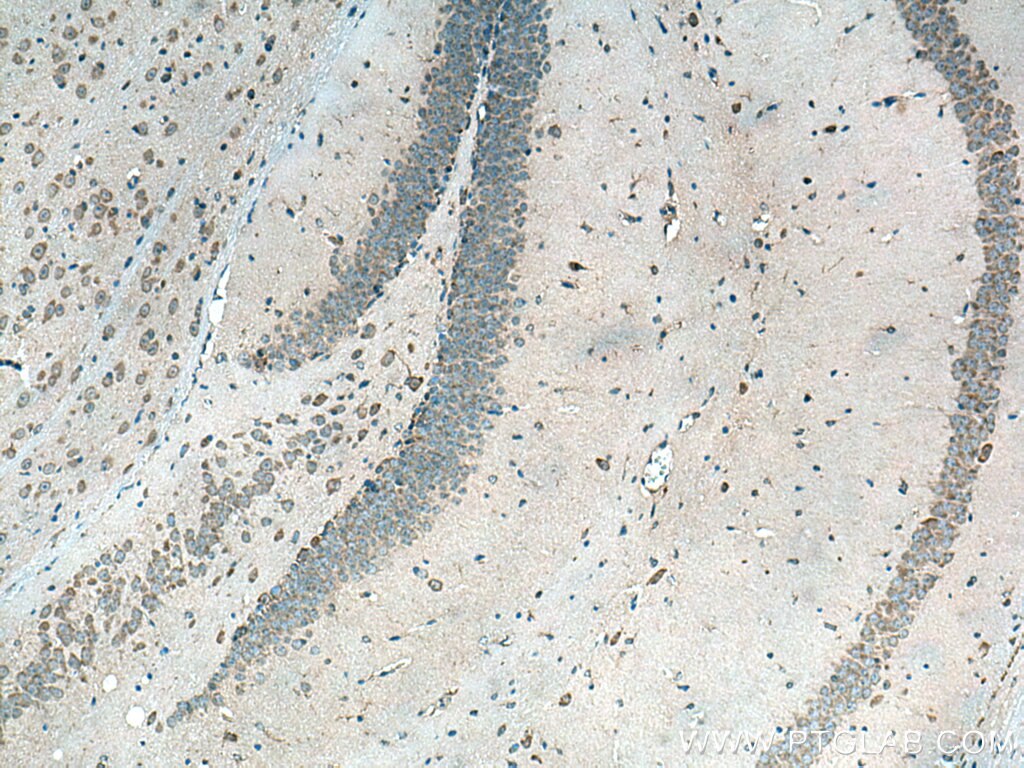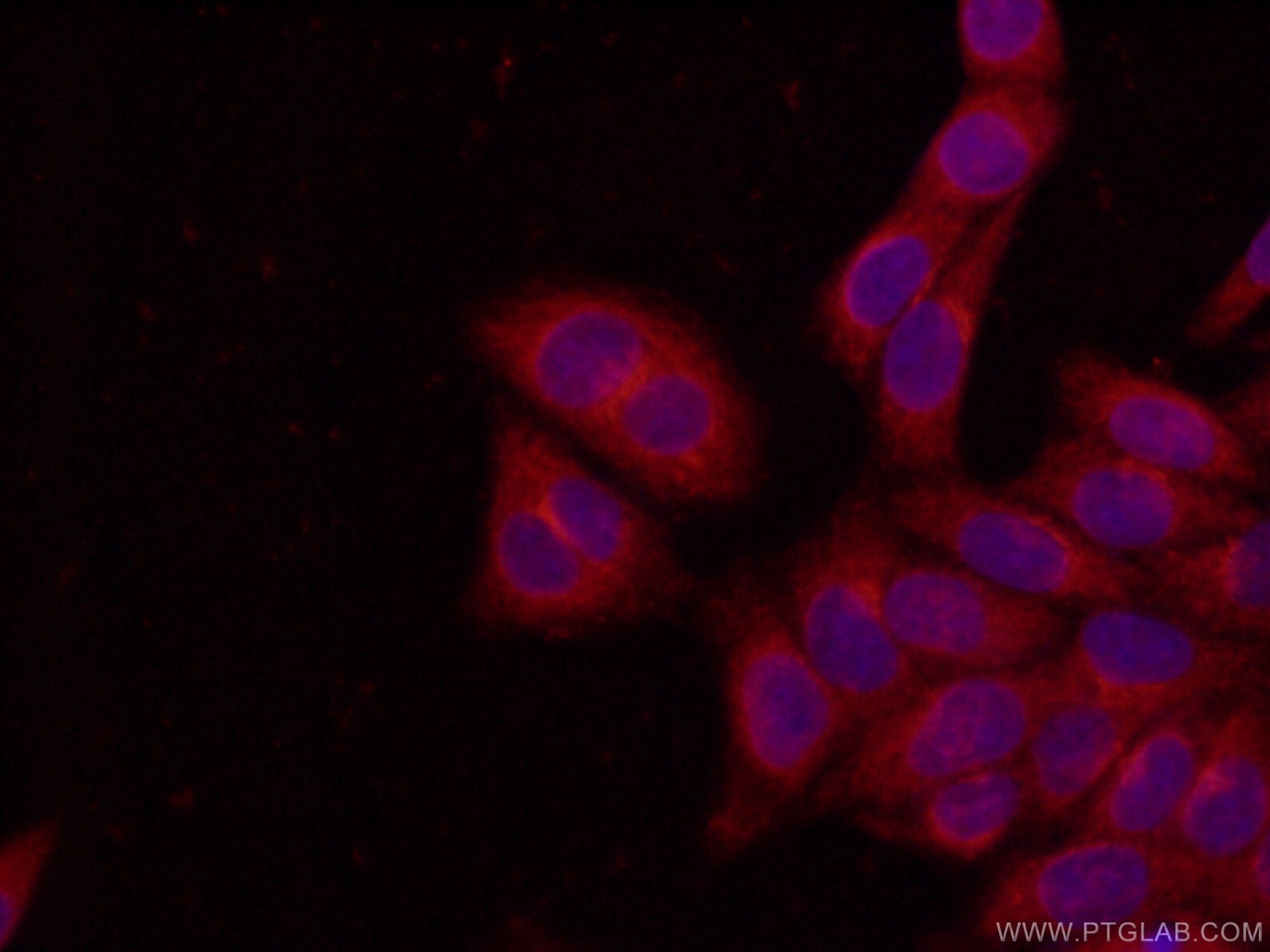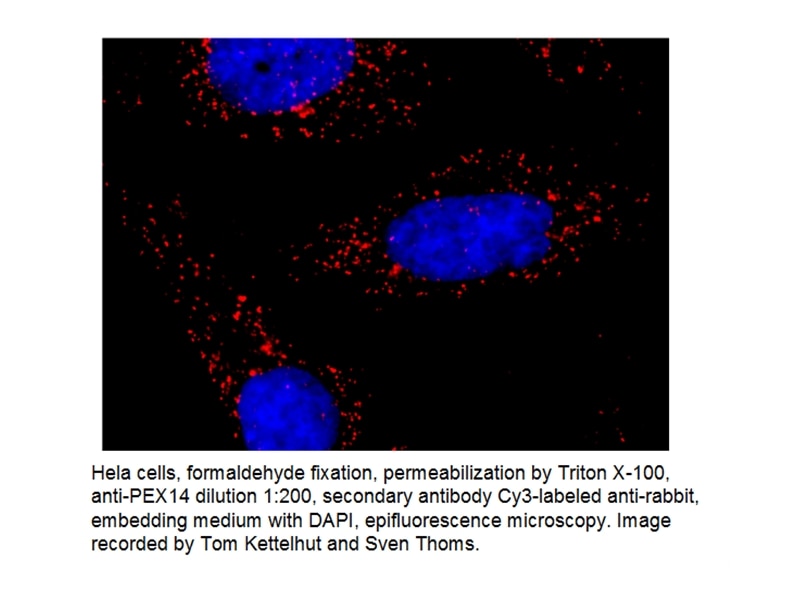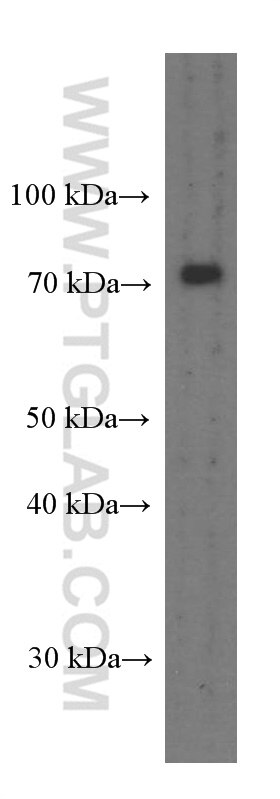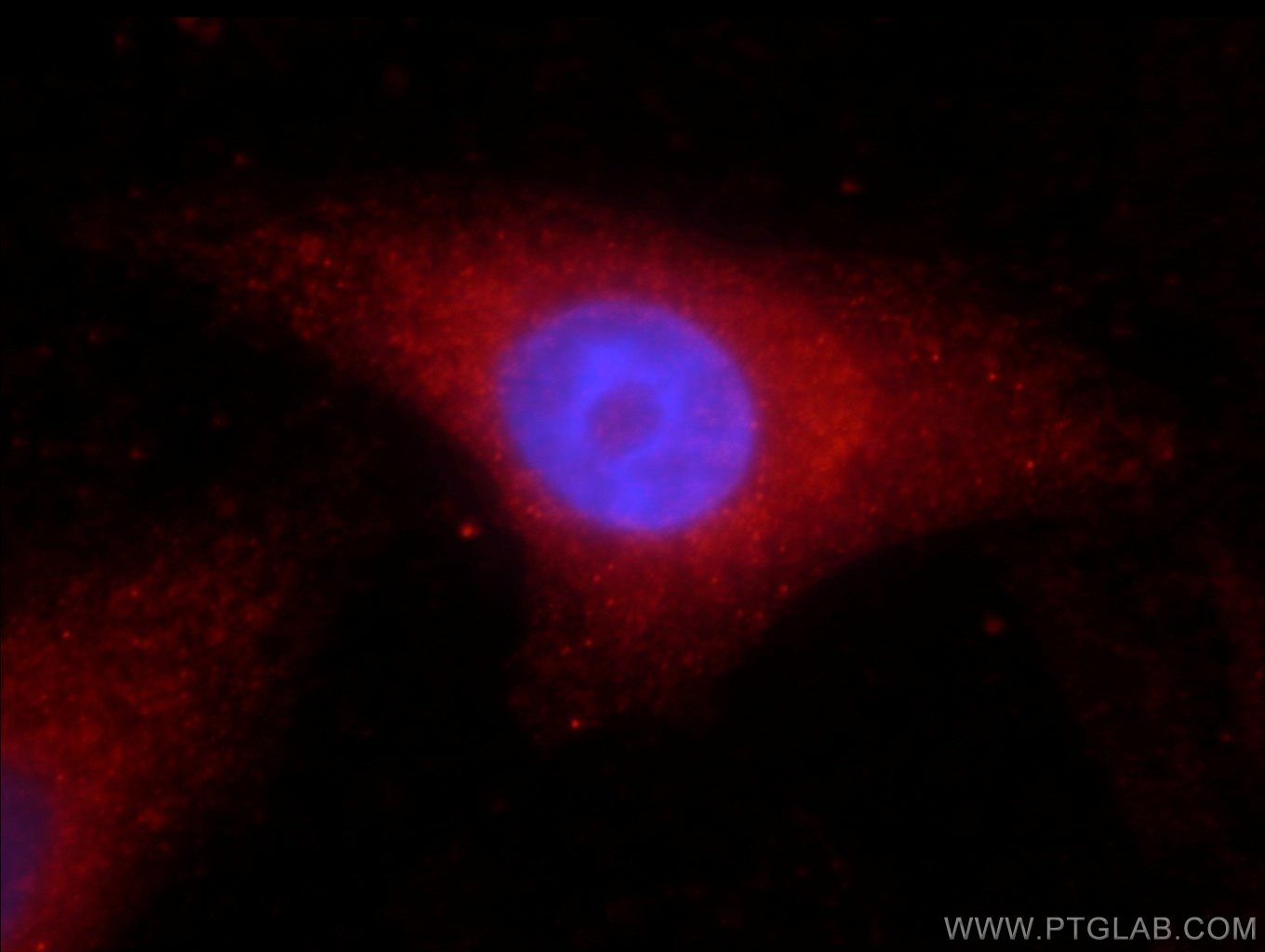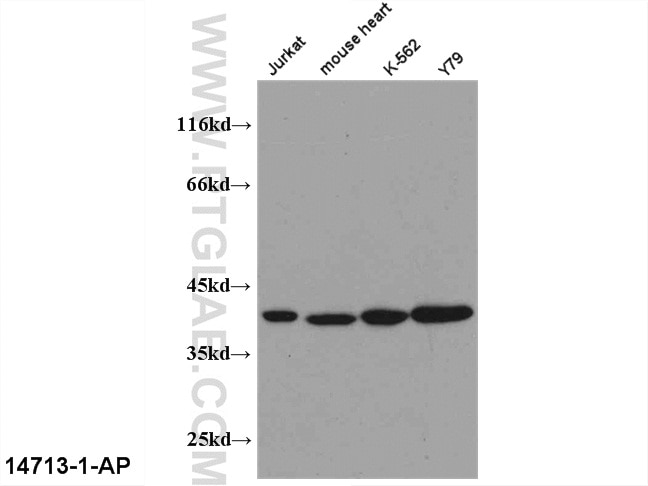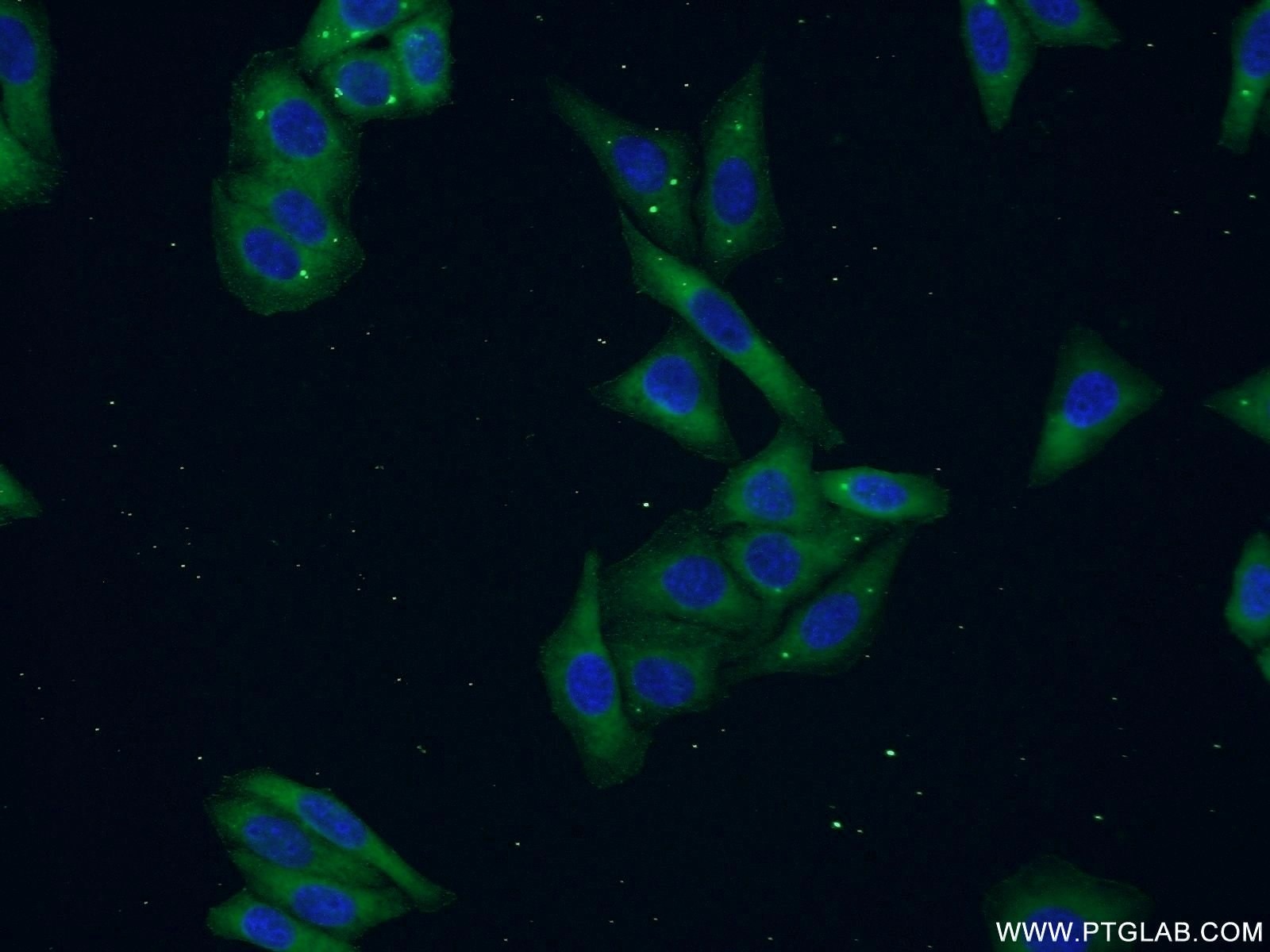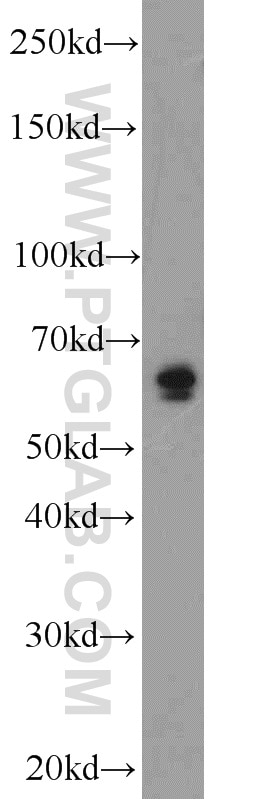- Phare
- Validé par KD/KO
Anticorps Polyclonal de lapin anti-PEX5
PEX5 Polyclonal Antibody for WB, IP, IF, IHC, ELISA
Hôte / Isotype
Lapin / IgG
Réactivité testée
Humain, rat, souris
Applications
WB, IHC, IF/ICC, IP, ELISA
Conjugaison
Non conjugué
N° de cat : 12545-1-AP
Synonymes
Galerie de données de validation
Applications testées
| Résultats positifs en WB | tissu cérébral humain, cellules HEK-293, cellules L02, tissu cérébral de souris, tissu rénal de souris, tissu rénal humain |
| Résultats positifs en IP | tissu rénal de souris |
| Résultats positifs en IHC | tissu rénal humain, tissu cérébral de souris il est suggéré de démasquer l'antigène avec un tampon de TE buffer pH 9.0; (*) À défaut, 'le démasquage de l'antigène peut être 'effectué avec un tampon citrate pH 6,0. |
| Résultats positifs en IF/ICC | cellules HeLa |
Dilution recommandée
| Application | Dilution |
|---|---|
| Western Blot (WB) | WB : 1:500-1:2000 |
| Immunoprécipitation (IP) | IP : 0.5-4.0 ug for 1.0-3.0 mg of total protein lysate |
| Immunohistochimie (IHC) | IHC : 1:100-1:400 |
| Immunofluorescence (IF)/ICC | IF/ICC : 1:50-1:500 |
| It is recommended that this reagent should be titrated in each testing system to obtain optimal results. | |
| Sample-dependent, check data in validation data gallery | |
Applications publiées
| KD/KO | See 2 publications below |
| WB | See 11 publications below |
| IF | See 3 publications below |
| IP | See 1 publications below |
| FC | See 1 publications below |
Informations sur le produit
12545-1-AP cible PEX5 dans les applications de WB, IHC, IF/ICC, IP, ELISA et montre une réactivité avec des échantillons Humain, rat, souris
| Réactivité | Humain, rat, souris |
| Réactivité citée | rat, Humain, souris |
| Hôte / Isotype | Lapin / IgG |
| Clonalité | Polyclonal |
| Type | Anticorps |
| Immunogène | PEX5 Protéine recombinante Ag3268 |
| Nom complet | peroxisomal biogenesis factor 5 |
| Masse moléculaire calculée | 631 aa, 70 kDa |
| Poids moléculaire observé | 68-80 kDa |
| Numéro d’acquisition GenBank | BC010621 |
| Symbole du gène | PEX5 |
| Identification du gène (NCBI) | 5830 |
| Conjugaison | Non conjugué |
| Forme | Liquide |
| Méthode de purification | Purification par affinité contre l'antigène |
| Tampon de stockage | PBS avec azoture de sodium à 0,02 % et glycérol à 50 % pH 7,3 |
| Conditions de stockage | Stocker à -20°C. Stable pendant un an après l'expédition. L'aliquotage n'est pas nécessaire pour le stockage à -20oC Les 20ul contiennent 0,1% de BSA. |
Informations générales
The peroxisomal targeting signal type1 (PTS1) receptor, PEX5, is one member of peroxins (PEXs) which are proteins required for peroxisome assembly. PEX5 and PEX7 function as receptors that recognize PTS1- and PTS2- containing proteins, respectively, and PEX5 binds PTS1 through its C-terminal 40-kDa tetratricopeptide repeat domain. It is a predominantly cytoplasmic, partly peroxisomal protein that appears to shuttle between these compartments as it mediates the import of PTS1-containing proteins. PEX5 has been reported to interact with PEX10, PEX12, PEX13, and PEX14. Defects in PEX5 are a cause of Zellweger syndrome (ZWS), which is a lethal peroxisome biogenesis disorder. This antibody recognizes endogenous PEX5, which migrates with an apparent molecular mass of 80 kDa (PMID: 7790377).
Protocole
| Product Specific Protocols | |
|---|---|
| WB protocol for PEX5 antibody 12545-1-AP | Download protocol |
| IHC protocol for PEX5 antibody 12545-1-AP | Download protocol |
| IF protocol for PEX5 antibody 12545-1-AP | Download protocol |
| IP protocol for PEX5 antibody 12545-1-AP | Download protocol |
| FC protocol for PEX5 antibody 12545-1-AP | Download protocol |
| Standard Protocols | |
|---|---|
| Click here to view our Standard Protocols |
Publications
| Species | Application | Title |
|---|---|---|
Nat Cell Biol A tuberous sclerosis complex signalling node at the peroxisome regulates mTORC1 and autophagy in response to ROS.
| ||
Autophagy Silencing PEX26 as an unconventional mode to kill drug-resistant cancer cells and forestall drug resistance. | ||
Hum Mol Genet A novel type of rhizomelic chondrodysplasia punctata, RCDP5, is caused by loss of the PEX5 long isoform. | ||
Biochim Biophys Acta Mol Cell Biol Lipids Ceramide regulates interaction of Hsd17b4 with Pex5 and function of peroxisomes. | ||
Eur J Pharmacol PEX5 prevents cardiomyocyte hypertrophy via suppressing the redox-sensitive signaling pathways MAPKs and STAT3. |
Avis
The reviews below have been submitted by verified Proteintech customers who received an incentive forproviding their feedback.
FH Zhihui (Verified Customer) (12-12-2018) |
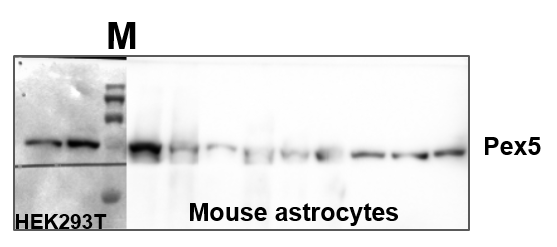 |
